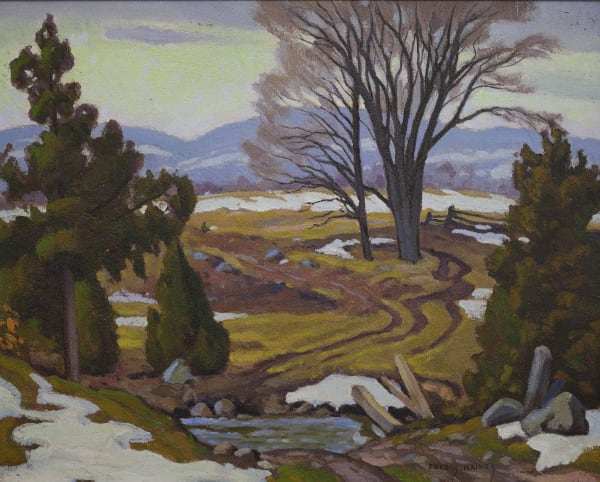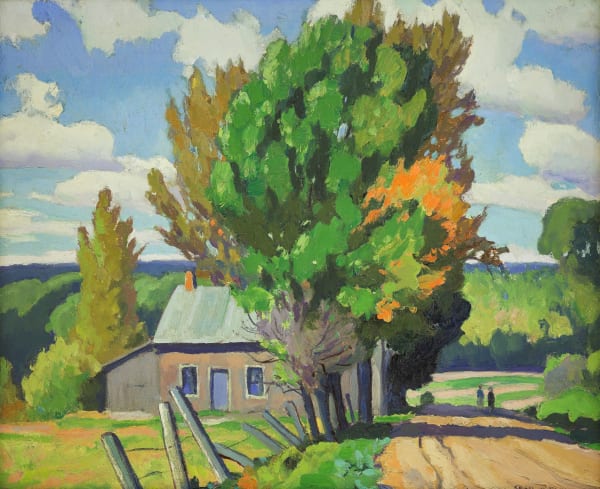Frederick Stanley Haines (March 29, 1879 - November 21, 1960) stands as a towering figure in the annals of Canadian art, remembered for his dynamic contributions to the art community through his creations, leadership, and educational endeavours.

Frederick Stanley Haines; Pines on the Shoreline
Early Life and Pursuits
Fred Haines was born in the scenic locale of Meaford, Ontario, where he nurtured a budding passion for the arts from a tender age.
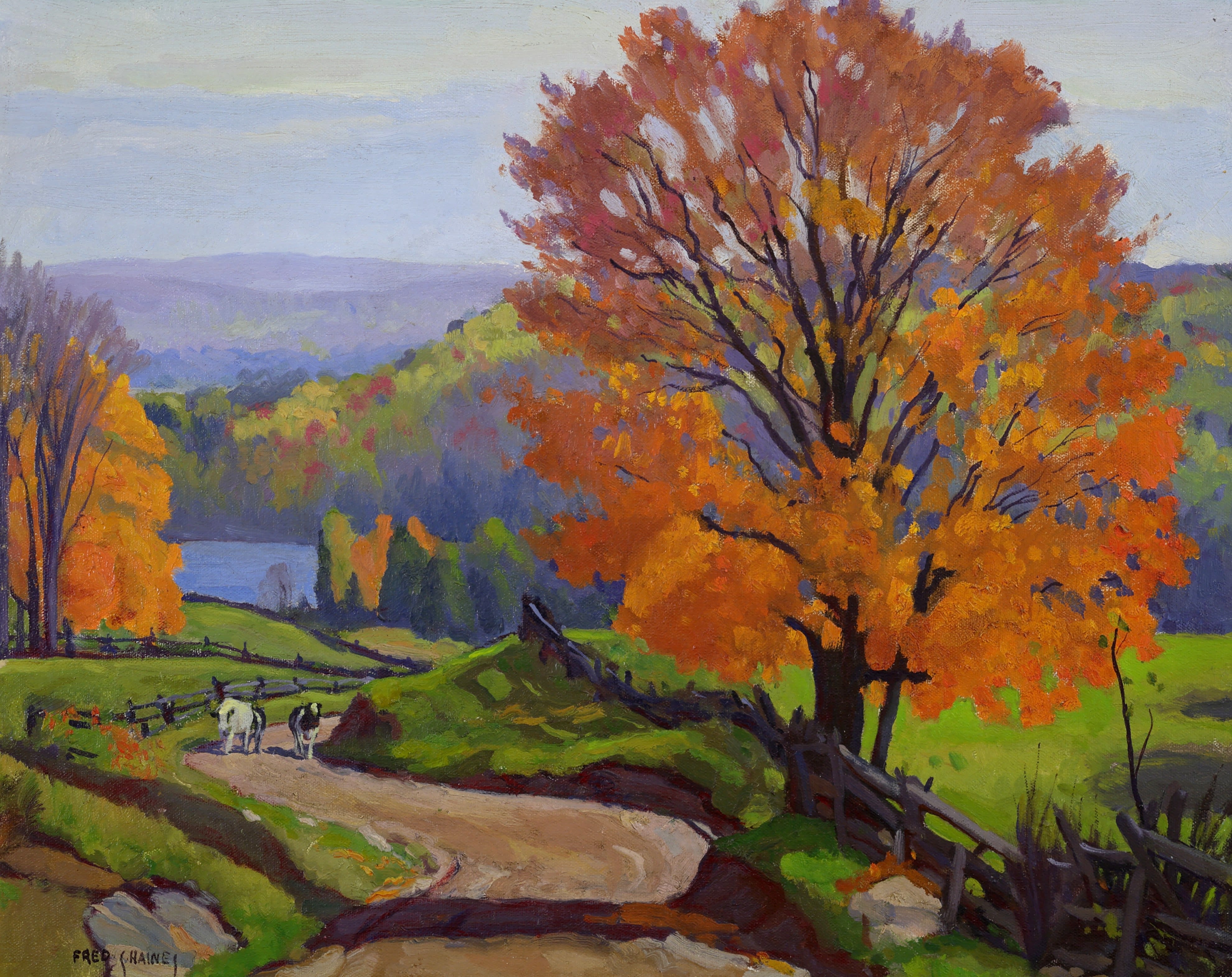
Frederick Stanley Haines; The Road to Wilberforce
At the ripe age of seventeen, Haines embarked on a pivotal journey to Toronto, chasing the dream of forging a career in the art world.
Artistic Education and Early Career
In Toronto, Haines balanced his ambitions by painting portraits for a traveling art dealer, which supported his studies at the Central Ontario School of Art.
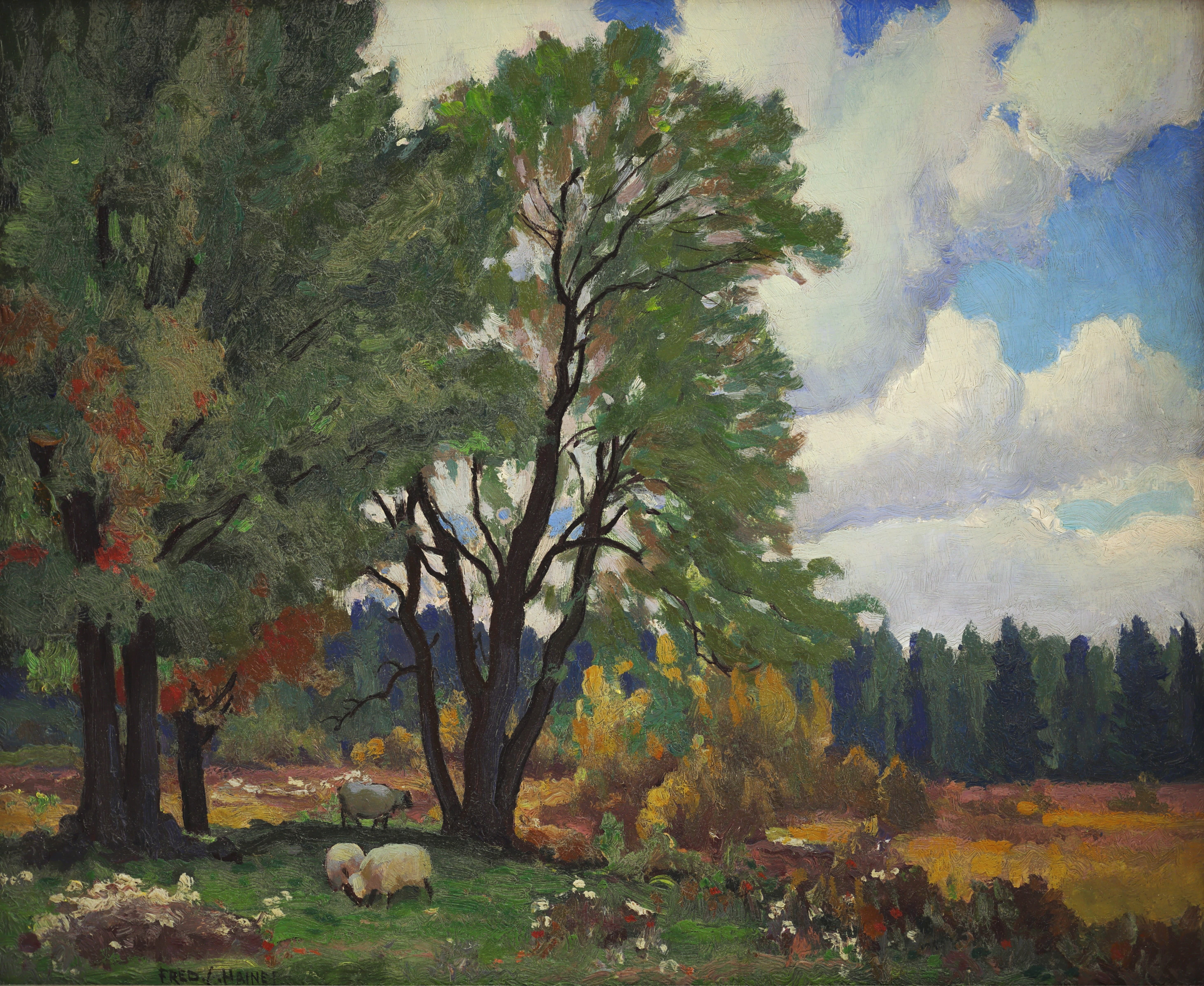
Frederick Stanley Haines; Shadows and Sheep
His artistic career gained momentum with his first exhibition in 1901 under the auspices of the Ontario Society of Artists, leading to his membership in 1906.
Haines sought to broaden his horizons in Europe, studying at the Academie Royale des Beaux Arts in Antwerp, Belgium. His remarkable skill in figure painting was honored with a gold medal, a testament to his burgeoning talent.
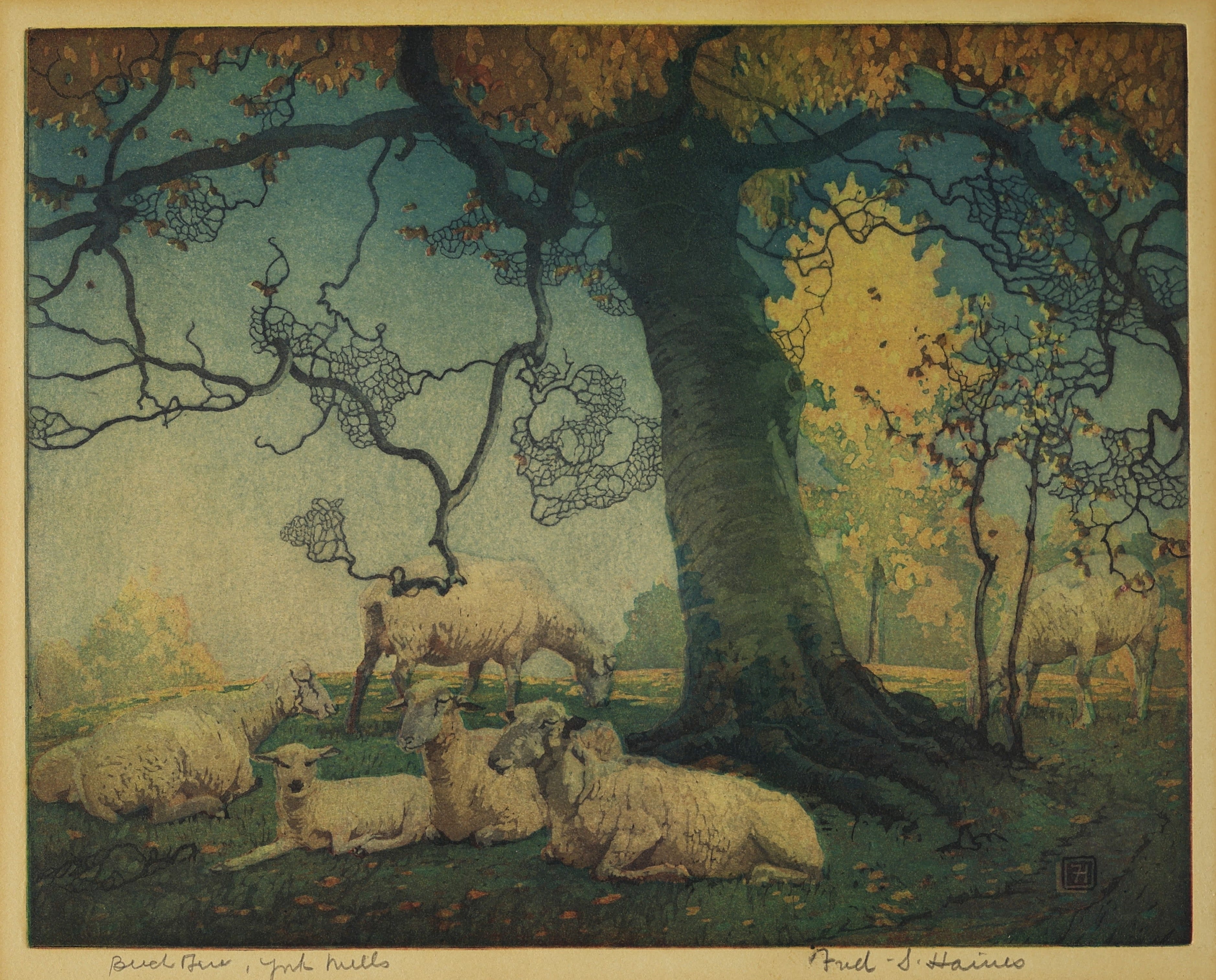
Frederick Stanley Haines; Beech Tree, York Mills
Expansion into Printmaking and Recognition
By 1919, Haines embraced printmaking, earning an associate membership with the Royal Canadian Academy. His etchings, known for their remarkable tone quality, garnered acclaim, notably at a 1924 exhibition at the Art Gallery of Toronto, cementing his stature in North America.
Leadership and Vision
Haines held numerous influential roles, including presidency of the Ontario Society of Artists and principalship at the Ontario College of Art. His curatorship at the Art Gallery of Toronto and commission for the Canadian National Exhibition's Fine Arts showcased his progressive vision, introducing international masters like Picasso and Dali to Canadian audiences.
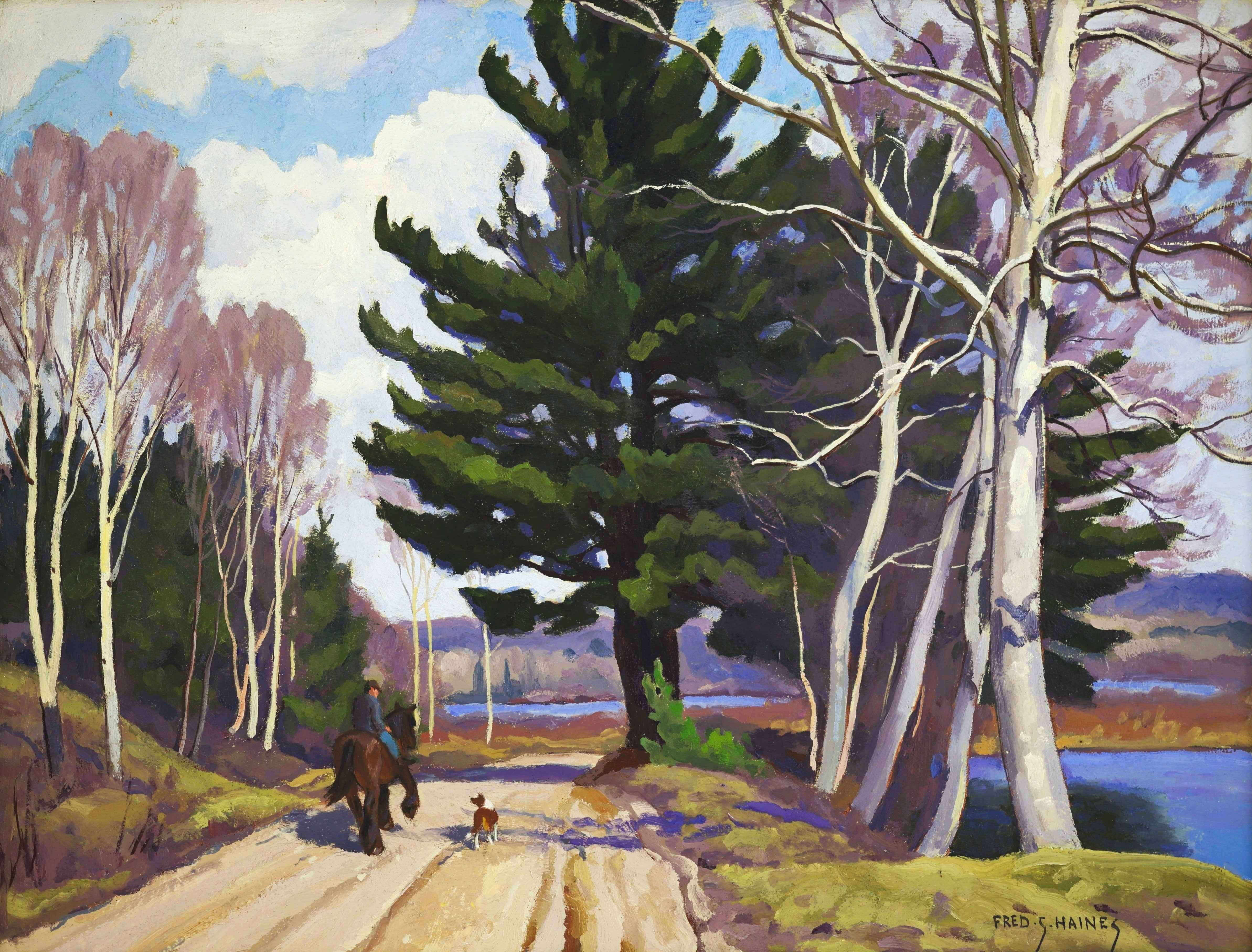
Contributions during World War II
During the tumult of World War II, Haines contributed to Sampson Matthews' silkscreen print project for servicemen, with pieces like "Beech Woods" and "Rural Bridge" achieving wide acclaim.
Teaching and Mentorship
Haines's openness to a wide range of painting styles fostered an environment of experimentation and learning, significantly impacting peers and students. His problem-solving approach to painting was a cornerstone of his teaching at the Ontario College of Art.
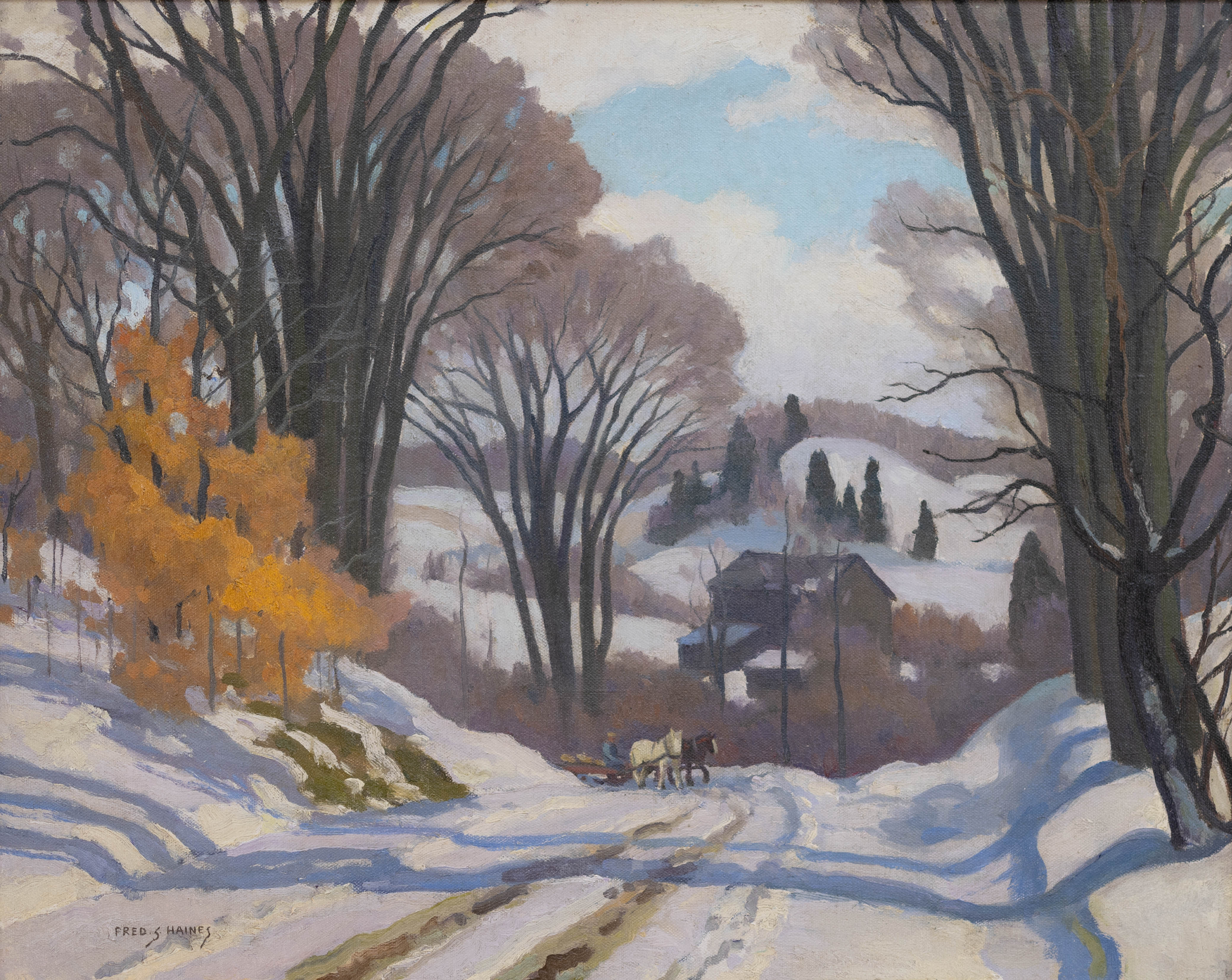
Frederick Stanley Haines; Burns Farm, Caledon
Later Years and Legacy
After retiring in 1951, Haines dedicated himself entirely to painting until his demise in 1960. His legacy was celebrated in a commemorative exhibition at the Art Gallery of Toronto.
Fred Haines's work is revered in collections across Canada, including the National Gallery of Canada and Hart House at the University of Toronto. His commitment to art, leadership within the community, and dedication to nurturing new talents have cemented his legacy as a seminal figure in Canadian art.
Fred Haines's life and work continue to be a beacon of inspiration, embodying the spirit of Canadian artistry and its capacity to innovate, educate, and captivate.


